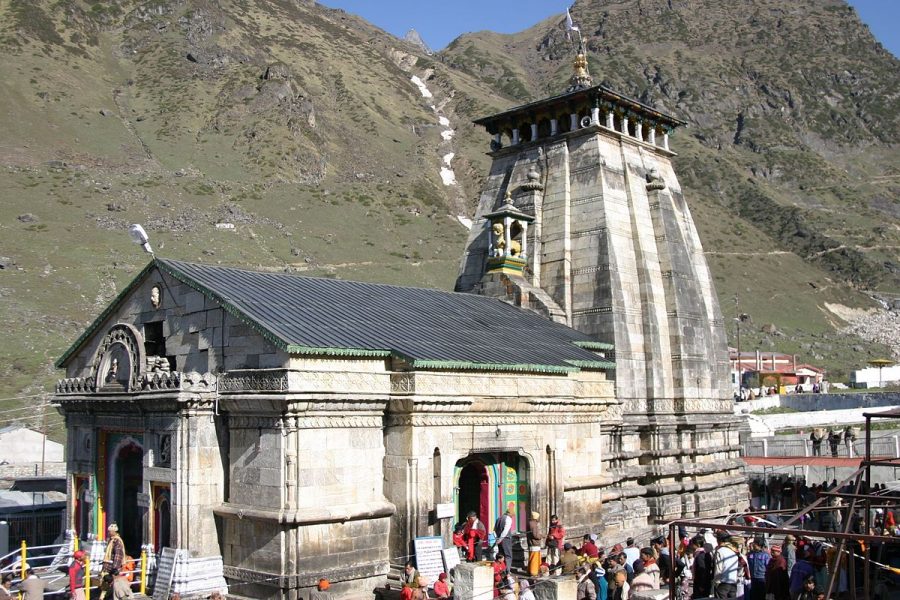
Record 69 deaths in just 20 days of Char Dham yatra raises concerns
High blood pressure, heart attack and mountain sickness are said to be the main reasons for the demise of pilgrims, but it is not yet clear why the number is unusually high this year

An unusually high number of deaths have been reported during the Char Dham yatra in Uttarakhand this year. In just around 20 days, beginning May 3, when this year’s yatra started, 69 deaths have been reported, according to government figures.
An official has given high blood pressure, heart attack and mountain sickness as the main reasons for the demise of the pilgrims.
The pilgrimage, which was resumed fully this year after two years of pandemic, has seen a record rush of pilgrims. As per latest figures, about 9 lakh people had undertaken the yatra in the first 20 days. The maximum deaths – 33 – have been reported from Kedarnath, followed by Yamunotri (20), Badrinath (12) and Gangotri (4).
According to The Indian Express, in 2019, around 38 lakh pilgrims undertook the yatra and over 90 pilgrims had died. In 2017 and 2018, 112 and 102 pilgrims died, respectively.
But these figures are for the whole season – about six months from the beginning of May till the day of Diwali, when the temples close for winter.
Also read: No place for Nawab: Insta celebrity husky draws ire of Kedarnath committee
This year, rains and unseasonal snowfall too have added to the problems for the authorities and pilgrims alike. The Kedarnath yatra has already been closed two times in these 20 days due to inclement weather.
High-altitude pilgrim centres
The four pilgrimage sites on the Char Dham yatra in Uttarakhand are situated at high altitudes in the Himalayas. The circuit consists of Yamunotri and Gangotri in Uttarkashi district, Kedarnath in Rudraprayag district and Badrinath in Chamoli district.
The Shiva temple at Kedarnath is situated at an altitude of around 11,700 feet above sea level, Badrinath (Vishnu temple) and Yamunotri (from where Yamuna originates) at around 10,800 feet, and Gangotri (origin of the Ganges) at the lowest point, around 10,200 feet.
While Badrinath and Gangotri are connected by road, for the other two, a trek is needed. Kedarnath is considered to be the toughest among the two treks and is 18 km long from the roadhead at Gaurikund. To reach Yamunotri, one has to trek 6 km from the roadhead at Janaki Chatti.
Moreover, while the Gangotri temple is connected by road, the pilgrimage is said to be complete only after an 18-km trek. It’s relatively easy with just a couple of tricky sections – to Gaumukh glacier, which is considered to be the origin of the Ganga. The Bhagirathi originates from the glacier and as it is the distributory of the Ganga, it is taken as the origin of the holy river. The main Ganga forms only at Devprayag, lower down in the hills, where Bhagirathi from Gangotri and Alaknanda from the hills above Badrinath merge.
Health services constrained
Though All India Institute of Medical Science (AIIMS), Rishikesh, along with an NGO have set up medical camps at all the four shrines, the rush of pilgrims is so high that it is impeding timely treatment of patients. Another impediment is the tough terrain, which is making it difficult for health services to reach the needy pilgrims on time.
An air ambulance is also kept on stand by and, as per reports, three pilgrims were airlifted to AIIMS Rishikesh on May 25.
According to the Uttarakhand Health Department, the cause of the deaths so far is altitude sickness. People who have heart problems are at higher risk, although anyone can suffer from its consequences without proper precautions.
“Most of the deaths of the pilgrims have taken place on travel routes. The cause of death of all has been high blood pressure, heart attack, and mountain sickness,” Uttarakhand Director-General Health Dr Shailja Bhatt told ANI.
The health official informed that the health check-up of the pilgrims is being done at various places on the travel routes besides Rishikesh.
Precautions to be taken
As all locations are at high altitude, acclimatisation is necessary to avoid high altitude sickness. Ideally, one should not gain more than 800-1,000 metres of elevation in a day.
Low oxygen levels combined with low air pressure can cause nausea and disorientation in those who are not acclimatised to the harsh conditions. Other symptoms are headache, dizziness, vomiting, fatigue, shortness of breath, problems with sleep, and a loss of appetite.
It is thus important to get a medical test done before planning the pilgrimage and keeping all required medicines along on the journey.
Those with comorbidities and those who are recovering from COVID should avoid the journey as it can be exhausting and turn fatal. People suffering with respiratory ailments, diabetes, high blood pressure and heart illness should be extra cautious.
Also read: Uttarakhand suspends ‘Char Dham Yatra’ amid rising COVID cases
If any of the symptoms are experienced or observed, immediate medical health should be sought.
Also, the devotees should carry warm clothes, sun glasses and use sunscreen (SPF 50) during the day. Regular drinking of water and food consumption is important as altitude can increase metabolism and suppress the feeling of hunger.


